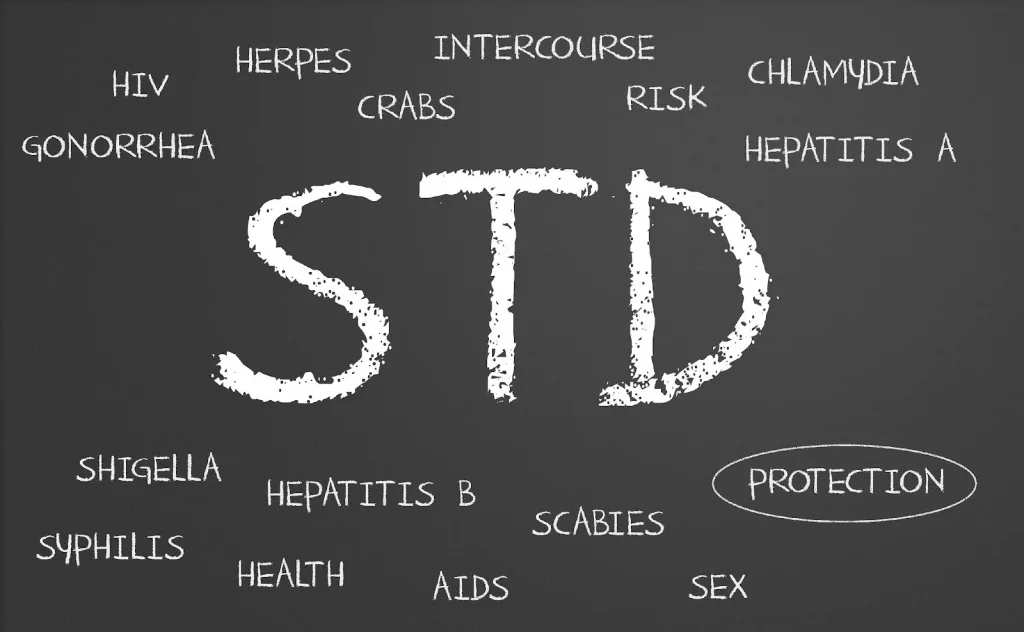Reagan Grey T. Reyes, MD, DPDS
Board-certified dermatologists are known to be the leading experts when it comes to skin, hair and nails. While this is true, dermatologists are also aware and recognizable of sexually transmitted infections, which refer to a variety of infections that can be acquired and transmitted through sexual contact.
Because of their typical skin symptoms (genital discharge, ulcers, lumps/bumps, itchiness), dermatologists are the first line physicians who are sought after by patients with sexually transmitted infections (STIs). It is important to keep in mind that both the doctor and the patient play a critical role in preventing and treating these common STIs.
List of common STI’s in Dermatology according to symptom:
-Genital Discharge:
Diseases presenting with genital discharge may also present with burning and painful urination. Gonorrhea is caused by the bacteria neisseria gonorrhea, while chlamydia is caused by the bacteria chlamydia trachomatis. They are transmitted sexually and also from infected mother to child.
Chlamydia presents with a less profuse and less purulent discharge than neisseria. Both diseases are treated with oral antibiotic therapy. Recent sex partners within 60 days should be referred for testing and presumptive antibiotic treatment. Other causes of genital discharge in women include: bacterial vaginosis, trichomonas vaginalis and candidiasis.
-Ulcers:
Genital ulcers are either painful or nonpainful. Genital herpes, caused by herpes simplex virus 1 and 2, presents as recurrent, grouped, painful blisters, which eventually leads to ulcers. It is usually accompanied by fever, headache and/or body weakness. Primary syphilis, on the other hand, is caused by the bacteria Treponema pallidum, and will present as a painless ulcer, which may later on progress to form generalized rash, fever, joint pains and/or hair loss.
For genital herpes, it is treated with antiviral medications, while for primary syphilis, further work-up is needed to confirm the diagnosis and this is treated with antibacterial therapy. Other causes of genital ulcers that are uncommon include: chancroid, lymphogranuloma venereum and donovanosis.
-Lumps/bumps:
Lumps or bumps located in the genital, anal and/or pubic region may be caused by genital warts or molluscum contagiosum. HPV types 6 & 11 in 90% of cases, as well as other HPV types cause genital warts. Molluscum contagiosum, on the other hand, is caused by the pox virus, MCV.
These diseases are transmitted by direct person-to-person contact as well as through contaminated objects. It can also be transferred to other parts of the body by scratching or scraping the skin.
Treatment options include topical medications and modalities like extraction or excision, electrocautery, cryosurgery or chemical peels. Watchful waiting for spontaneous resolution is sometimes an option. Vaccines for genital warts caused by HPV are available and is given to patients as early as teenage years to provide maximum protection.
-Itchiness
Pediculosis pubis, caused by the crab lice Phthirus pubis, is a marker for STI risk and is transmitted through pubic apposition, sleeping in the same bed and with exchange of towels. Scabies, on the other hand, is caused by the ectoparasite Sarcoptes scabiei and is transmitted through prolonged skin-to-skin contact.
Persons with both diseases usually seek medical attention because of intense genital itchiness, which may be associated with skin lesions on the genitalia and intertriginous area. These diseases are treatable with topical and/or oral medications and treating family members and sexual partners is equally important.
-HIV/AIDS:
The spectrum of skin manifestations associated with HIV is vast. The skin is the largest and most visible organ of the body, and although the cutaneous immune system serves as the body’s first line of defense against infection, it can also present numerous cutaneous manifestations.
Nearly all individuals with HIV will develop a skin disorder at some point in their clinical course, some of which can be debilitating and disfiguring; these conditions may present challenges for both patients and clinicians hence the importance of recognition and management of HIV-related cutaneous manifestations. Consultation with your board-certified dermatologist and infectious disease specialist is a must in HIV patients presenting with skin disorders.
CONCLUSION
Despite the current pandemic situation, STI cases are still alarmingly on the rise. With that, vigilance is a must when it comes to these diseases. Complete STI screening is recommended for persons with symptoms of STI and that prevention through abstinence, being faithful, correct and consistent condom use, drug avoidance, and education, is vital in fighting these infections. Your board-certified dermatologist is trained in treating these infections and consultation is the first step and key for proper diagnosis and treatment.
References:
1. https://www.cdc.gov/mmwr/pdf/rr/rr6403.pdf
2. https://www.hiv.uw.edu/go/basic-primary-care/cutaneous-manifestations/core-concept/all




